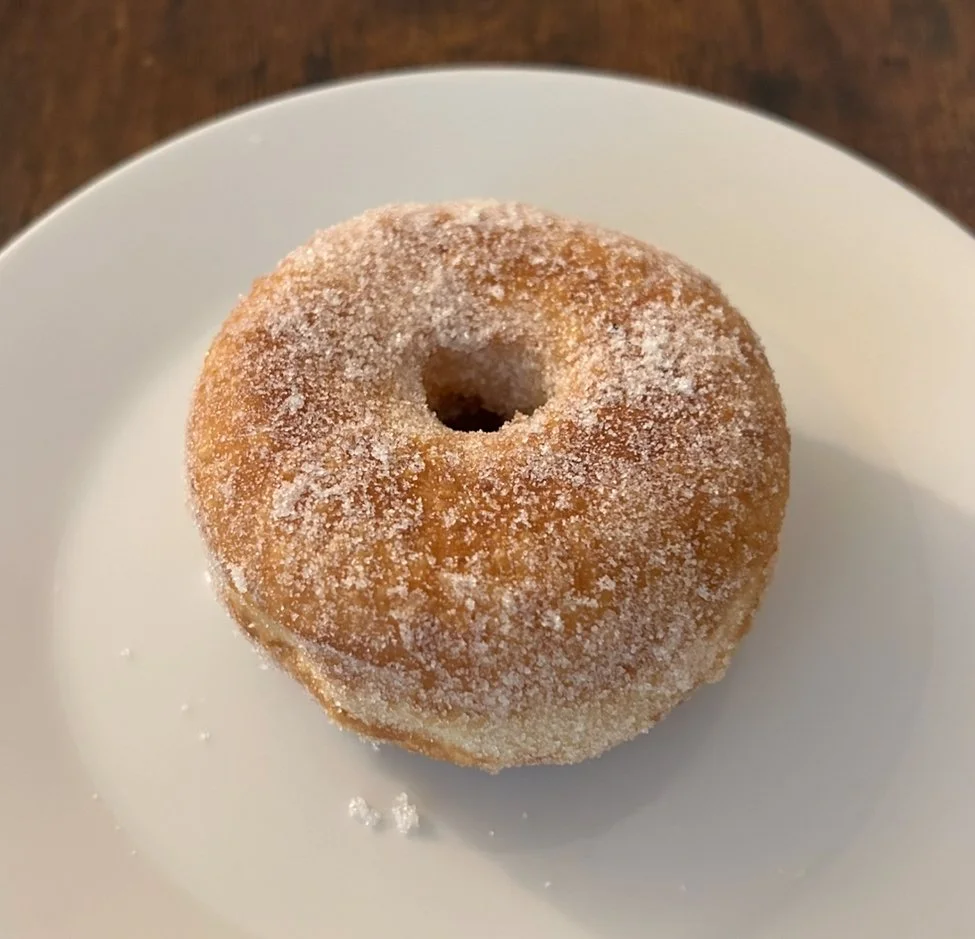Doughnuts
Description
Variations of doughnuts are popular around the world, including French beignets, Spanish churros, Jewish sufganiyot and Italian bomboloni, just to name a few. What makes the American doughnut unique from the rest is the fact that they are shaped like a bagel, with a hole in the middle. Fried dough desserts have existed since ancient times, but the version of doughnuts that became popular in America can be traced back to Dutch “olykoeks”, meaning “oil cakes”. These olykoeks were round and often stuffed with fruits or nuts, because as they fried, the center would still be raw by the time the outside was fully cooked. As the story goes, the American doughnut received its signature shape thanks to American ship captain Hansen Gregory. In 1847, he had the idea of punching a hole in the dough ball prior to frying to help the doughnut cook evenly in the oil. Hence, the American doughnut was born, and as a byproduct, the doughnut hole. Since the 19th century, doughnuts have been popularized by the invention of the automatic doughnut machine in 1920, and were even further popularized by establishments such as Krispy Kreme and Dunkin’ Donuts. Today, doughnuts can be found on grocery store shelves, family-owned doughnut shops, and everywhere in between. An important distinction to make is that there are two main kinds of doughnuts in the US - yeasted and cake doughnuts. Yeasted doughnuts are prepared with a fortified, leavened dough, while cake doughnuts are made with an unleavened cake-style batter. Both varieties are delicious, but the below recipe is a standard recipe for sugar coated or glazed yeast doughnuts, which are the two most standard preparations.
Ingredients (makes 6 doughnuts)
2 cups peanut oil (440 ml)
Dough
3 cups flour (360 g) - bread/higher gluten flour is ideal
1 large egg
3/4 cup milk (180 ml)
1/4 cup sugar (50 g)
2 tbsp melted butter (28 g)
1/2 tsp salt (3 g)
1/2 tsp active dry yeast (3 g)
Glaze
1 cup powdered sugar (120 g)
1/4 tsp vanilla extract (1 g)
2 tbsp milk (30 ml)
Coating
2 cups granulated sugar (400 g)
Preparation
Add the melted butter, egg and milk to a bowl and whisk to combine. In a separate bowl, mix together the flour, sugar, salt and yeast.
Add the wet ingredients into the flour mixture and knead into a rough dough ball. Cover and rest for 30 minutes. Then stretch and fold the dough over itself and rest another 30 minutes. Repeat this one more time. At this point, you can place the dough in the refrigerator to ferment overnight (they will taste better but this step is optional). Otherwise, you can leave the dough at room temperature and allow to rise for 2-3 hours, or until doubled in size.
If using refrigerated dough, allow to sit at room temperature for one hour. Lightly flour a cutting board and roll out the dough into a 1/4 inch sheet (0.6 cm). Using a cookie cutter or a mug, cut the dough into circles. Using a very small cutter (I actually used a bottle cap which was the perfect size), cut out the center of the doughnut and set aside. Allow the doughnuts and doughnut holes to proof at room temperature for 30 minutes. You will have excess dough leftover, so feel free to wet it slightly and roll back into a dough ball to make additional doughnuts.
To make the glaze, whisk all ingredients together until thoroughly combined.
Place sugar on a plate or tray for coating.
Place the oil in a pan or small pot. Heat over medium-low heat until the oil reaches 350 degrees (180 C). Make sure the oil doesn’t get too hot or the doughnuts will brown too much. To make the doughnut holes, fry for about 30 seconds on each side until they are light brown. Immediately coat in either the sugar or glaze and then place on a tray to cool. To make the doughnuts, you can fry one at a time or in batches. If frying in batches, you may need to keep a closer eye on the heat because the oil temperature will drop with multiple doughnuts in the oil. Fry each doughnut for 90 seconds on each side, and then immediately coat in the oil or glaze. Transfer to a cooling rack.
Doughnuts are best enjoyed fresh and warm, although they will still taste good hours later.
Notes
You can make a variety of glazes or coatings for doughnuts - use this recipe as a baseline for other variations.
Feel free to top these doughnuts with different varieties of icing or sprinkles, as this is a very common preparation in doughnut shops.

